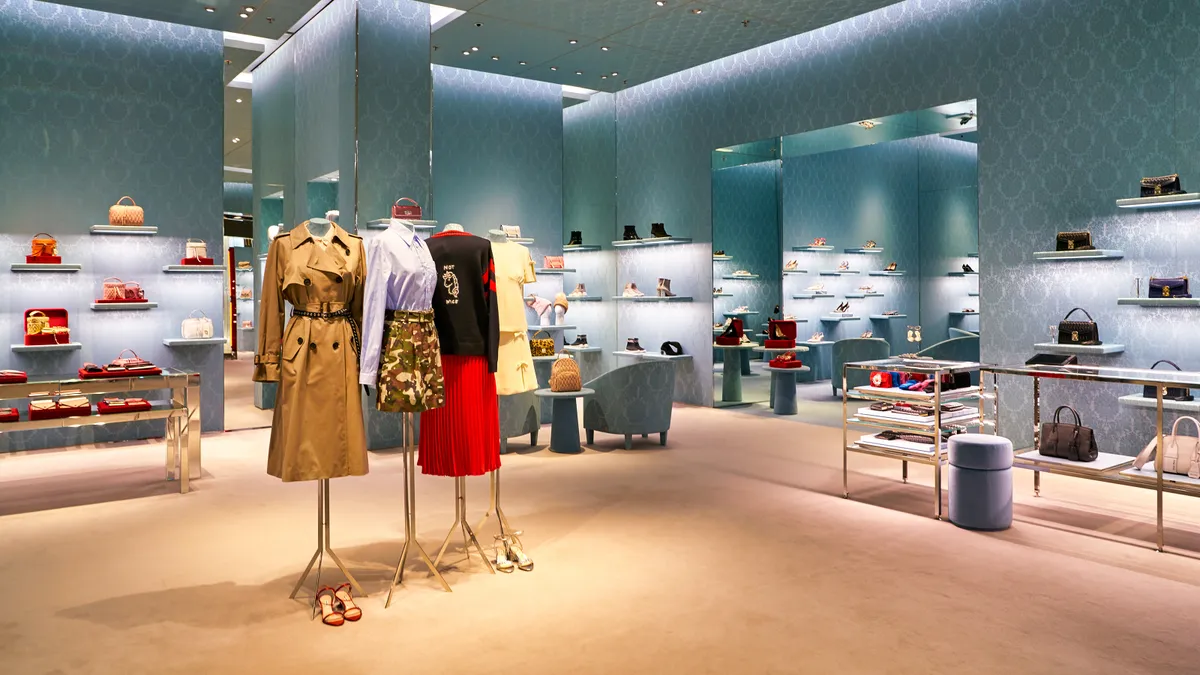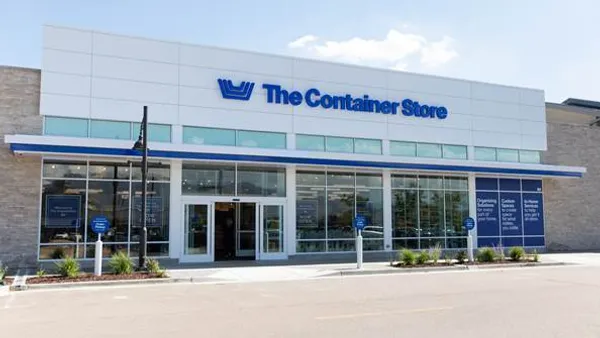A lack of international tourists, supply chain constraints and rising costs have not stopped luxury brands from thriving in the ever-evolving U.S. retail landscape. From 2016-2019, the luxury market grew 5% per year, outpacing growth in the non-luxury sector. In 2021, this growth skyrocketed, surging 47% higher than 2019, according to Bank of America Corp. data. The luxury sector is expected to continue its upward trajectory, expanding another 8.5% this year and cumulatively more than 20% by 2025, making these brands the star of the retail real estate market.
This growth is attributed to U.S. affluence and the engagement of younger consumers. According to Coresight Research, the U.S. is home to 22 million individuals with a net worth over $1 million. These ultra-wealthy households are “revenge spending” on goods and experiences as physical office spaces, travel and special events return post-pandemic. The pandemic also forced luxury brands to leverage e-commerce, something they were historically slow to embrace. E-commerce currently represents more than 20% of luxury sales, double the market penetration of 2016, and this online presence has sparked the interest of Millennials and Generation Z. By 2025, NetBase Quid predicts that these younger consumers will make up 50% of luxury market spend.
Luxury brands are taking advantage of this growth by opening new store locations and creating artful retail experiences that continue to drive consumer engagement.
Gateway cities of New York, Chicago, Los Angeles and San Francisco have always been the focus of U.S. luxury retail; however, in recent years, accelerated by the pandemic, U.S. Census Bureau data indicates many of these residents are migrating to sunbelt states like Texas, Florida, Arizona and North Carolina—and luxury retailers are following.
“We are still seeing tremendous demand from luxury brands in traditional markets,” says Mike O’Neill, Vice Chairman, Retail Services at Cushman & Wakefield. “But we are also seeing this demand in markets that in the past have not been perceived as luxury markets.”
In Austin, new Gucci and Hermès stores opened this spring, and Prada has announced plans to follow. Gucci also opened a store in Columbus this summer with additional stores coming soon to New Orleans and St. Louis. LoveShackFancy opened a location in Nashville this past April, and Givenchy is planning stores in Atlanta and Philadelphia.
Luxury retailers are also becoming savvier at amplifying their brand experience and creating winning consumer journeys. “The store should be event-driven, collaboration-rich, visually compelling and a place where shoppers interact with the brand,” says James Downey, Executive Director, Retail Services at Cushman & Wakefield. “Luxury retailers understand this, and their consumer experiences are addressing this.”
New luxury store concepts include Brunello Cucinelli’s intimate, appointment-only store in New York City that feels like shoppers are in a friend’s apartment, and Gentle Monster’s life-size robots in their Santa Clara flagship store that put their future-focused brand values front and center. Pop-up stores are also being leveraged to test new concepts, products and locations. These temporary experiences create special brand moments and a sense of exclusivity and urgency.
The future looks bright
Through new locations and charming experiences, luxury retailers are expanding their customer base and positioning their brand for continued success. As luxury retailers look to the future, they are focused on continuing to build these meaningful relationships with consumers.
Collaborations with more main-stream brands are introducing luxury brands to a younger demographic. Adidas, who has a long-standing partnership with Stella McCartney, is expanding their luxury collaboration success by teaming up with Prada this year. Gucci collaborated with North Face on a two-part outdoor inspired apparel capsule, and what could be more fun than Balmain X Barbie! These limited-edition product offerings build brand fans.
Luxury retailers are also finding success by connecting with consumers in the metaverse. In 2021, Gucci partnered with Roblox to create a customized experience where players try on and purchase digital accessories for their avatars. Louis Vuitton, Burberry and Dolce & Gabbana have also sold exclusive couture items through the metaverse.
“The metaverse enables brands to create and test exclusive assortments. In this digital universe, customers can spend meaningful time with brands and build an even deeper appreciation for the product,” explained Alanna Loeffler who leads Cushman & Wakefield’s Digitally Native Brands team. Taking advantage of new opportunities to interact with consumers in this exciting frontier is further amplifying the voice of luxury brands.
Luxury brands are leveraging all channels to engage consumers. From in-store to online, luxury brands understand their generations of fans, how to create desirable products and how to build brand loyalty. Through these creative efforts, luxury brands will continue to drive momentum and expand their presence in the retail landscape.










